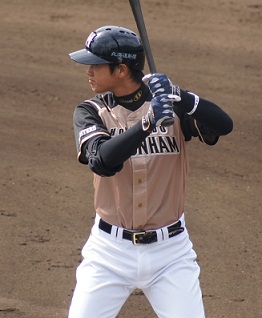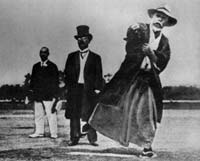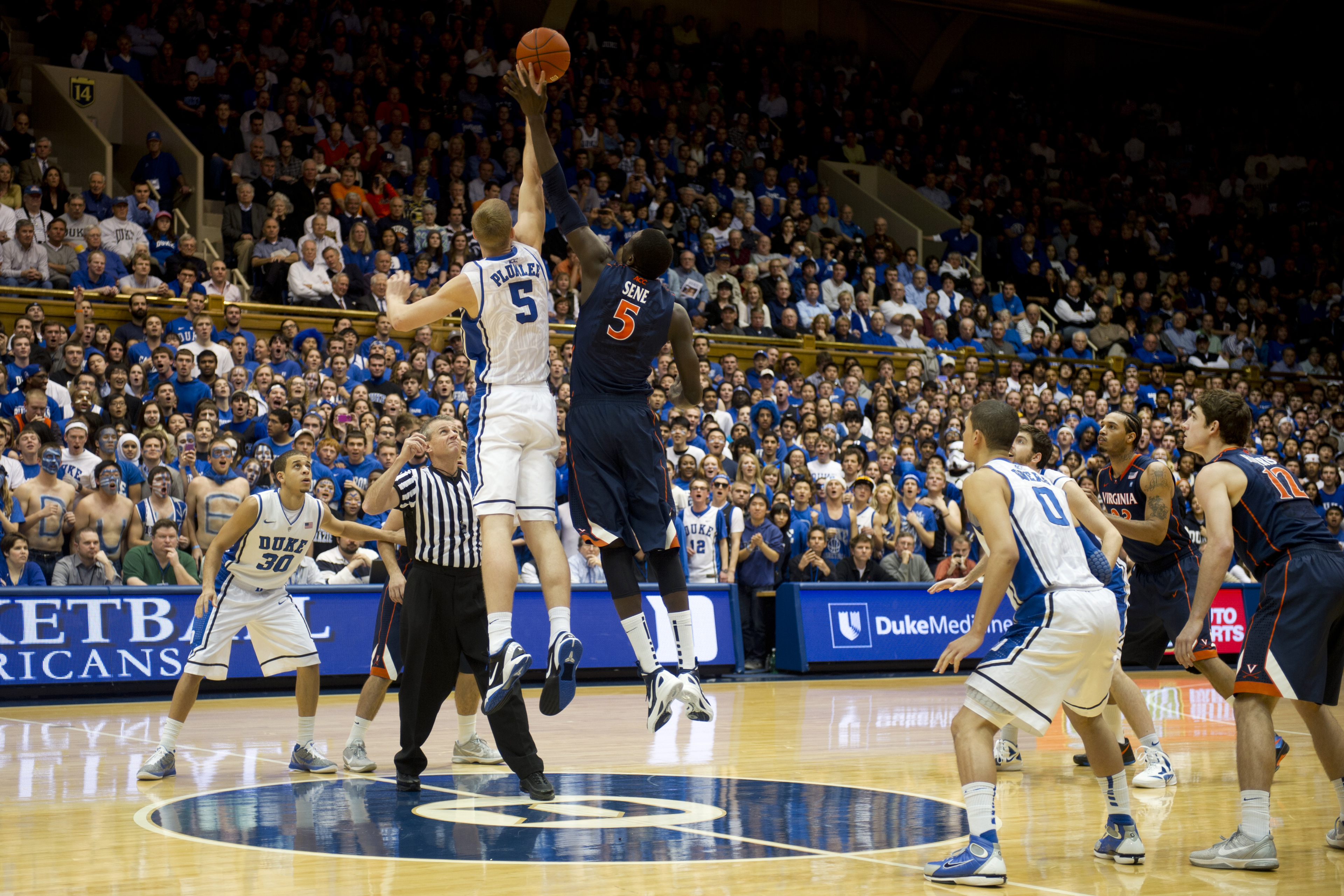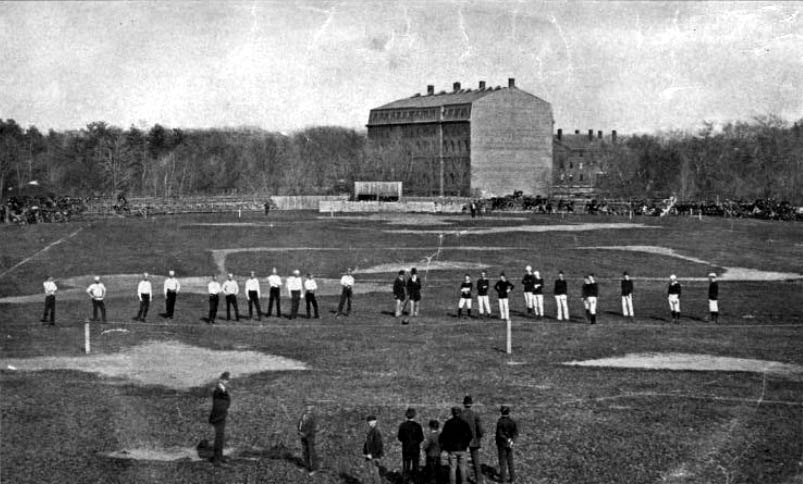|
Baseball In Japan
Baseball was introduced to Japan in 1859 and is Japan's most popular participatory and spectator sport. The first professional competitions emerged in the 1920s. The highest level of baseball in Japan is Nippon Professional Baseball (NPB), which consists of two leagues, the Central League and the Pacific League, with six teams in each league. High school baseball enjoys a particularly strong public profile and fan base, much like college football and college basketball in the United States; the Japanese High School Baseball Championship ("Summer ''Kōshien''"), which takes place each August, is nationally televised and includes regional champions from each of Japan's Prefectures of Japan, 47 prefectures. In Japanese language, Japanese, baseball is commonly called , combining the Kanji, characters for ''field'' and ''ball''. According to the Japan National Tourism Organization (JNTO), the atmosphere of Japanese baseball games is less relaxed than in the United States, with fans r ... [...More Info...] [...Related Items...] OR: [Wikipedia] [Google] [Baidu] |
Baseball At The Summer Olympics
Baseball at the Summer Olympics unofficially debuted at the 1900 Summer Olympics in Paris, and was first contested as a demonstration sport at the 1912 Summer Olympics in Stockholm. It became an official Olympic sport at the 1992 Summer Olympics in Barcelona, then was played at each Olympiad through the 2008 Summer Olympics in Beijing. The sport was then dropped from the Summer Olympic program, until being revived for the 2020 Summer Olympics in Tokyo for a single appearance. It is next expected to be part of the 2028 Summer Olympics in Los Angeles. Olympic baseball is governed by the World Baseball Softball Confederation (WBSC). History Although little was recorded, Olympic baseball first appeared at the 1900 Paris Games. Twelve years later, in 1912, in Stockholm, a United States team played against host Sweden, winning 13–3. An exhibition baseball game was also played at the 1924 Summer Olympics in Paris. In 1936, in Berlin, two United States teams played each other befor ... [...More Info...] [...Related Items...] OR: [Wikipedia] [Google] [Baidu] |
Shohei Ohtani
is a Japanese professional baseball designated hitter and pitcher for the Los Angeles Dodgers of Major League Baseball (MLB). Nicknamed "Shotime", he has previously played in MLB for the Los Angeles Angels and in Nippon Professional Baseball (NPB) for the Hokkaido Nippon-Ham Fighters. Because of his elite contributions as a hitter and as a pitcher, a rarity as a Two-way player#Baseball, two-way player, Ohtani's prime seasons have been considered among the greatest in baseball history, with some comparing them favorably to the early career of Babe Ruth. Considered early on as an elite two-way player, Ohtani was the first pick of the Fighters in the 2012 Nippon Professional Baseball draft, 2012 NPB draft. He played for the Fighters from 2013 through 2017 as a pitcher and an outfielder, and won the 2016 Japan Series with them. The Fighters posting system, posted Ohtani to MLB after the 2017 season, and he signed with the Angels, soon winning the 2018 American League (AL) Major ... [...More Info...] [...Related Items...] OR: [Wikipedia] [Google] [Baidu] |
Yokohama Stadium 2023 May 2
is the second-largest city in Japan by population as well as by area, and the country's most populous municipality. It is the capital and most populous city in Kanagawa Prefecture, with a population of 3.7 million in 2023. It lies on Tokyo Bay, south of Tokyo, in the Kantō region of the main island of Honshu. Yokohama is also the major economic, cultural, and commercial hub of the Greater Tokyo Area along the Keihin Industrial Zone. Yokohama was one of the cities to open for trade with the West following the 1859 end of the policy of seclusion and has since been known as a cosmopolitan port city, after Kobe opened in 1853. Yokohama is the home of many Japan's firsts in the Meiji period, including the first foreign trading port and Chinatown (1859), European-style sport venues (1860s), English-language newspaper (1861), confectionery and beer manufacturing (1865), daily newspaper (1870), gas-powered street lamps (1870s), railway station (1872), and power plant (1882). Yokoh ... [...More Info...] [...Related Items...] OR: [Wikipedia] [Google] [Baidu] |
Robert Whiting
Robert Whiting (born October 24, 1942) is a best-selling author and journalist who has written several books on contemporary Japanese culture—which include topics such as baseball and American gangsters operating in Japan. He was born in New Jersey, grew up in Eureka, California"More about Robert Whiting" japanesebaseball.com and graduated from in . He has lived in Japan for more than three decades since he first arrived there in 1962, while serving in the U.S. Air Force. He divides his time between homes in Tokyo and Ca ... [...More Info...] [...Related Items...] OR: [Wikipedia] [Google] [Baidu] |
Japan National Tourism Organization
The , JNTO, provides information about Japan to promote travel to and in the country. It was established in 1964 and its headquarters are in Yotsuya, Shinjuku-ku, Tokyo. The JNTO operates Tourist Information Centers (TICs) as well as a website. It disseminates information about transportation, lodging, food and beverage, and sight-seeing as well as published tourism statistics and market reports. It also provides support for international conventions and incentive events. Functions JNTO is an Independent Administrative Institution of the government of Japan. Its publications and website assist in preparing travel itineraries within Japan, providing a wide range of travel information in English and other languages on transportation, accommodations, shopping and events. The materials are updated frequently. While traveling in Japan, visitors may take advantage of the nationwide "i" Information System, which numbered 113 outlets in 2004. Each "i" center is an information source for ... [...More Info...] [...Related Items...] OR: [Wikipedia] [Google] [Baidu] |
Kanji
are logographic Chinese characters, adapted from Chinese family of scripts, Chinese script, used in the writing of Japanese language, Japanese. They were made a major part of the Japanese writing system during the time of Old Japanese and are still used, along with the subsequently-derived Syllabary, syllabic scripts of and . The characters have Japanese pronunciations; most have two, with one based on the Chinese sound. A few characters were invented in Japan by constructing character components derived from other Chinese characters. After the Meiji Restoration, Japan made its own efforts to simplify the characters, now known as , by a process similar to China's simplified Chinese characters, simplification efforts, with the intention to increase literacy among the general public. Since the 1920s, the Japanese government has published character lists periodically to help direct the education of its citizenry through the myriad Chinese characters that exist. There are nearly 3 ... [...More Info...] [...Related Items...] OR: [Wikipedia] [Google] [Baidu] |
Japanese Language
is the principal language of the Japonic languages, Japonic language family spoken by the Japanese people. It has around 123 million speakers, primarily in Japan, the only country where it is the national language, and within the Japanese diaspora worldwide. The Japonic family also includes the Ryukyuan languages and the variously classified Hachijō language. There have been many Classification of the Japonic languages, attempts to group the Japonic languages with other families such as Ainu languages, Ainu, Austronesian languages, Austronesian, Koreanic languages, Koreanic, and the now discredited Altaic languages, Altaic, but none of these proposals have gained any widespread acceptance. Little is known of the language's prehistory, or when it first appeared in Japan. Chinese documents from the 3rd century AD recorded a few Japanese words, but substantial Old Japanese texts did not appear until the 8th century. From the Heian period (794–1185), extensive waves of Sino-Ja ... [...More Info...] [...Related Items...] OR: [Wikipedia] [Google] [Baidu] |
Prefectures Of Japan
Japan is divided into 47 prefectures (, , ), which rank immediately below the national government and form the country's first level of jurisdiction and Administrative divisions of Japan, administrative division. They include 43 prefectures proper (, ''Prefectures of Japan#Ken, ken''), two Fu (administrative division), urban prefectures (, ''Prefectures of Japan#Fu, fu'': Osaka Prefecture, Osaka and Kyoto Prefecture, Kyoto), one regional prefecture (, ''Prefectures of Japan#Dō, dō'': Hokkaido, Hokkaidō) and one metropolis (, ''Prefectures of Japan#To, to'': Tokyo). In 1868, the Meiji Restoration, Meiji ''Fuhanken sanchisei'' administration created the first prefectures (urban ''fu'' and rural ''ken'') to replace the urban and rural administrators (''bugyō'', ''daikan'', etc.) in the Tenryō, parts of the country previously controlled directly by the shogunate and a few territories of rebels/shogunate loyalists who had not submitted to the new government such as Aizu domain, ... [...More Info...] [...Related Items...] OR: [Wikipedia] [Google] [Baidu] |
Japanese High School Baseball Championship
The of Japan, commonly known as , is an annual nationwide high school baseball tournament. It is the largest scale amateur sport event in Japan. The tournament, organized by the Japan High School Baseball Federation and ''Asahi Shimbun'', takes place during the summer school vacation period, culminating in a two-week final tournament stage with 49 teams in August at in the Koshien district of Nishinomiya City, Hyōgo, Japan. Background In the past teams from overseas have participated in the tournament. Korea fielded teams from 1921 to 1940; both Taiwan and Manchuria had teams participate from 1923 to 1940. The 49 schools taking part in the final tourney represent regional champions of each of the prefectures of Japan (with two from Hokkaidō and Tokyo). From mid-June until July, regional tournaments are held to decide who is sent to Koshien. The rules are the same as in the National High School Baseball Invitational Tournament. It is a single elimination tournament ... [...More Info...] [...Related Items...] OR: [Wikipedia] [Google] [Baidu] |
College Basketball
College basketball is basketball that is played by teams of Student athlete, student-athletes at universities and colleges. In the Higher education in the United States, United States, colleges and universities are governed by collegiate athletic bodies, including the National Collegiate Athletic Association (NCAA), the National Association of Intercollegiate Athletics (NAIA), the United States Collegiate Athletic Association (USCAA), the National Junior College Athletic Association (NJCAA), and the National Christian College Athletic Association (NCCAA). Each of these various organizations is subdivided into one to three divisions, based on the number and level of scholarships that may be provided to the athletes. Teams with more talent tend to win over teams with less talent. Each organization has different conferences to divide the teams into groups. Traditionally, the location of a school has been a significant factor in determining conference affiliation. The bulk of the g ... [...More Info...] [...Related Items...] OR: [Wikipedia] [Google] [Baidu] |
College Football
College football is gridiron football that is played by teams of amateur Student athlete, student-athletes at universities and colleges. It was through collegiate competition that gridiron football American football in the United States, first gained popularity in the United States. Like gridiron football generally, college football is most popular in the United States and Canada. While no single governing body exists for college football in the United States, most schools, especially those at the highest levels of play, are members of the National Collegiate Athletic Association, NCAA. In Canada, collegiate football competition is governed by U Sports for universities. The Canadian Collegiate Athletic Association (for colleges) governs soccer and other sports but not gridiron football. Other countries, such as Organización Nacional Estudiantil de Fútbol Americano, Mexico, American football in Japan, Japan and Korea American Football Association, South Korea, also host colle ... [...More Info...] [...Related Items...] OR: [Wikipedia] [Google] [Baidu] |





